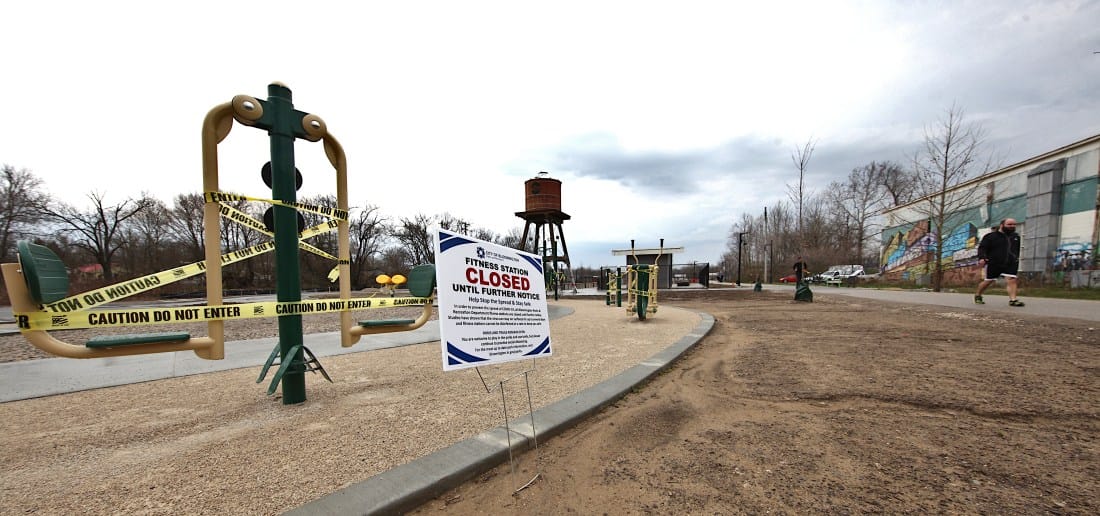Indiana’s stay-at-home order allows for outdoor recreation, governor still wants people to keep distance between each other


At a 2:30 p.m. press conference on Thursday, Indiana’s governor Eric Holcomb was asked by a reporter to respond to criticism that his stay-at-home order didn’t go far enough.
The order is supposed to help stop the spread of the COVID-19 virus, which has killed 17 people so far in Indiana since the first case was confirmed on March 6. Three weeks later the number of confirmed cases stood at 645.
The order, which went into effect on Wednesday, allows for a raft of exceptions, for businesses considered “essential”—including retail stores that sell alcoholic beverages and businesses that provide real estate services.
Was the order having an impact? Holcomb’s answer: Yes.
Holcomb’s response included the fact that his stay-at-home order has a requirement on the continued operation of essential businesses. They’re supposed to continue to operate only if they can maintain a six-foot distance between people, including customers standing in line, a concept that’s now called “social distancing.”
Holcomb applied the same social distancing concept to outdoor recreational activities. Allowed under the stay-at-home order are, for example, walking, hiking, running, or bicycling.
Holcomb encouraged people who go outside, especially on days like the one the day before, when skies were sunny and temperatures hit the mid-60s.
Holcomb said, “Yesterday was a great day to be outdoors, and I encourage people to get out and walk their dog.” He immediately added, “Or get out and walk their cat, if they want.”
If people are outside, can they anticipate being asked to justify themselves to a law enforcement officers? At Thursday’s press conference, Indiana State Police Superintendent Doug Carter, responded to that question. He said there’s nothing in the governor’s order requiring people to have documentation that they are working for an essential business.
Carter said he’d received nine reports of people being stopped outside by law enforcement officers across the state, some of them involving citizens being told they’d face a $500 fine if they continued to be outside without a proper document. He had not be able to substantiate any of the reports, he said.
About the idea that someone would have to have the right papers to be outside, Carter said, “I hope in America we never get to that point.”
On Thursday afternoon in Bloomington, the mid-60s temperatures continued from the day before, but a light rain was falling. Still, plenty of people were outside moving up and down the B-Line Trail.
Yellow caution tape had been wrapped around the playgrounds and workout stations along the trail and in Switchyard Park near where the trail runs past.
That’s consistent with the governor’s order and the city of Bloomington’s Tuesday announcement that playgrounds would be closed, but trails would remain open.
In the half hour it took to shoot some photos of the B-Line Trail on Thursday, The Square Beacon saw maybe two dozen people, among them two bicyclists, a couple of joggers, and four people walking their dogs. No cats made it into the tally.
Here’s the chapter and verse from the governor’s order that allows outdoor recreation:
7. Leaving the Home for Essential Activities is Permitted
For purposes of this Executive Order, individuals may leave their homes or residences only to perform any of the following, which are deemed to be “Essential Activities” hereunder:
…
c. For Outdoor Activity
To engage in outdoor activity, provided that they comply with the Social Distancing
Requirements (as defined below), such as, by way of example and without limitation, walking, hiking, running, or biking. Individuals may go to public parks and open outdoor recreation areas. However, public access playgrounds may increase spread of COVID-19, and therefore shall be closed.
…






Comments ()